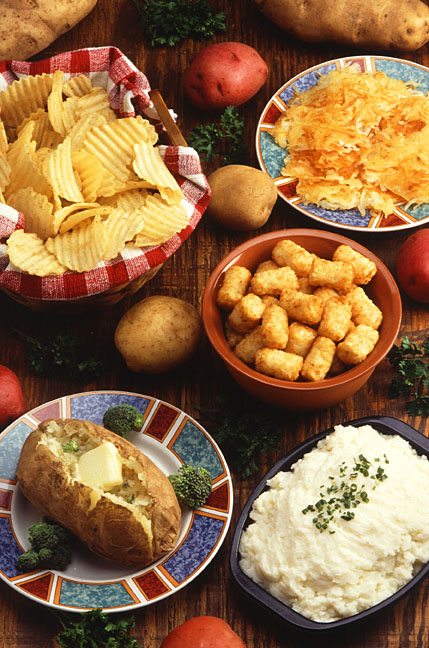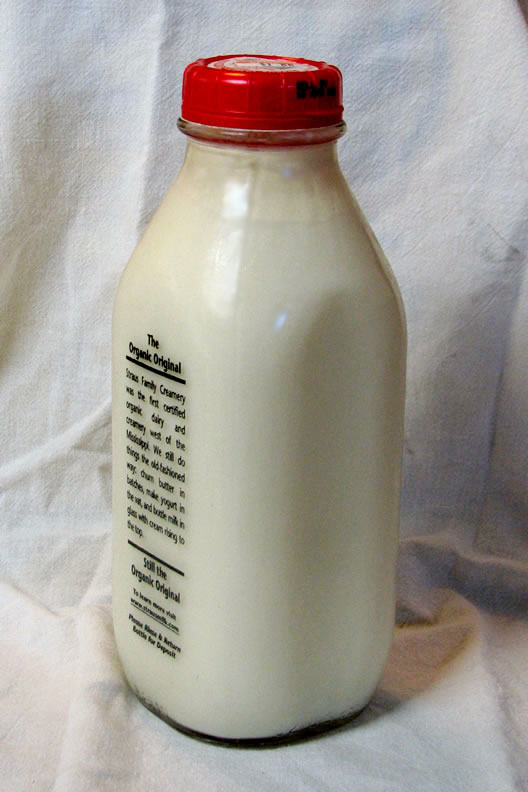|
Ajiaco
Ajiaco () is a soup common to Colombia, Cuba, and Peru.Clark, Melissa (October 28, 2011)"From Colombia, the Ultimate One-Pot Meal" ''The New York Times''. Accessed April 2016. Scholars have debated the origin of the dish. The dish is especially popular in the Colombian capital, Bogotá, being called Ajiaco santafereño, where it is typically made with chicken, three varieties of potatoes, and the herb ''Galinsoga parviflora'', known locally as ''guasca'' or ''guascas''. In Cuba, ajiaco is prepared as a stew, while in Peru the dish is prepared with a number of regionally specific variations. History The exact origin of this dish has been debated by scholars. In his book ''Lexicografia Antillana'', former president of Cuba Alfredo Zayas y Alfonso stated that the word "ajiaco" derived from "aji", the native Taíno word for "hot pepper." Cuban ethnologist Fernando Ortiz stated that ajiaco was a meal typical of the Taíno, and was an appropriate metaphor for Cuba being a melting pot. ... [...More Info...] [...Related Items...] OR: [Wikipedia] [Google] [Baidu] |
List Of Soups
This is a list of notable soups. Soups have been made since Ancient history, ancient times. Some soups are served with large chunks of meat or vegetables left in the liquid, while others are served as a broth. A broth is a flavored liquid usually derived from boiling a type of meat with bone, a spice mix, or a vegetable mix for a period of time in a Stock (food), stock. A potage is a category of thick soups, stews, or porridges, in some of which meat and vegetables are boiled together with water until they form a thick mush. Bisque (food), Bisques are heavy cream soups traditionally prepared with shellfish, but can be made with any type of seafood or other base ingredients. Cream soups are dairy based soups. Although they may be consumed on their own, or with a meal, the canned, condensed form of cream soup is sometimes used as a quick sauce in a variety of meat and pasta convenience food dishes, such as casseroles. Similar to bisques, chowders are thick soups usually containi ... [...More Info...] [...Related Items...] OR: [Wikipedia] [Google] [Baidu] |
Bogotá
Bogotá (, also , , ), officially Bogotá, Distrito Capital, abbreviated Bogotá, D.C., and formerly known as Santa Fe de Bogotá (; ) during the Spanish period and between 1991 and 2000, is the capital city of Colombia, and one of the largest cities in the world. The city is administered as the Capital districts and territories, Capital District, as well as the capital of, though not part of, the surrounding department of Cundinamarca Department, Cundinamarca. Bogotá is a territorial entity of the first order, with the same administrative status as the Department (Colombia), departments of Colombia. It is the political, economic, administrative, and industrial center of the country. Bogotá was founded as the capital of the New Kingdom of Granada on 6 August 1538 by Spanish conquistador Gonzalo Jiménez de Quesada after a harsh Spanish conquest of the Muisca, expedition into the Andes conquering the Muisca people, Muisca, the indigenous inhabitants of the Altiplano. Santafé ... [...More Info...] [...Related Items...] OR: [Wikipedia] [Google] [Baidu] |
List Of Potato Dishes
The potato is a starchy, tuberous crop. It is the world's fourth-largest food crop, following rice, wheat and corn. The annual diet of an average global citizen in the first decade of the 21st century included about of potato. The potato was first domesticated by the Andean civilizations in the region of modern-day southern Peru and extreme northwestern Bolivia between 8000 and 5000 BCE.Office of International Affairs, '' Lost Crops of the Incas: Little-Known Plants of the Andes with Promise for Worldwide Cultivation'' (1989online/ref> It has since spread around the world and has become a staple food, staple crop in many countries. The following is a list of dishes that use potato as a main ingredient. See also * Potato cooking * List of potato cultivars * List of sweet potato dishes * List of vegetable dishes References Bibliography * Buonassisi, Vincenzo (1985)''Il nuovo codice della pasta'' Rizzoli. . {{cuisine Lists of foods by ingredient, Potato Dishes Potato ... [...More Info...] [...Related Items...] OR: [Wikipedia] [Google] [Baidu] |
Soup
Soup is a primarily liquid food, generally served warm or hot (but may be cool or cold), that is made by combining ingredients of meat or vegetables with stock, milk, or water. Hot soups are additionally characterized by boiling solid ingredients in liquids in a pot until the flavors are extracted, forming a broth. Soups are similar to stews, and in some cases there may not be a clear distinction between the two; however, soups generally have more liquid (broth) than stews. In traditional French cuisine, soups are classified into two main groups: ''clear soups'' and ''thick soups''. The established French classifications of clear soups are '' bouillon'' and '' consommé''. Thick soups are classified depending upon the type of thickening agent used: '' purées'' are vegetable soups thickened with starch; '' bisques'' are made from puréed shellfish or vegetables thickened with cream; cream soups may be thickened with béchamel sauce; and '' veloutés'' are thic ... [...More Info...] [...Related Items...] OR: [Wikipedia] [Google] [Baidu] |
Colombia
Colombia (, ; ), officially the Republic of Colombia, is a country in South America with insular regions in North America—near Nicaragua's Caribbean coast—as well as in the Pacific Ocean. The Colombian mainland is bordered by the Caribbean Sea to the north, Venezuela to the east and northeast, Brazil to the southeast, Ecuador and Peru to the south and southwest, the Pacific Ocean to the west, and Panama to the northwest. Colombia is divided into 32 departments and the Capital District of Bogotá, the country's largest city. It covers an area of 1,141,748 square kilometers (440,831 sq mi), and has a population of 52 million. Colombia's cultural heritage—including language, religion, cuisine, and art—reflects its history as a Spanish colony, fusing cultural elements brought by immigration from Europe and the Middle East, with those brought by enslaved Africans, as well as with those of the various Amerindian civilizations that predate colonization. Spanis ... [...More Info...] [...Related Items...] OR: [Wikipedia] [Google] [Baidu] |
Cream
Cream is a dairy product composed of the higher-fat layer skimmed from the top of milk before homogenization. In un-homogenized milk, the fat, which is less dense, eventually rises to the top. In the industrial production of cream, this process is accelerated by using centrifuges called "separators". In many countries, it is sold in several grades depending on the total butterfat content. It can be dried to a powder for shipment to distant markets, and contains high levels of saturated fat. Cream skimmed from milk may be called "sweet cream" to distinguish it from cream skimmed from whey, a by-product of cheese-making. Whey cream has a lower fat content and tastes more salty, tangy and "cheesy". In many countries partially fermented cream is also sold: sour cream, crème fraîche, and so on. Both forms have many culinary uses in both sweet and savoury dishes. Cream produced by cattle (particularly Jersey cattle) grazing on natural pasture often contains some carotenoid pi ... [...More Info...] [...Related Items...] OR: [Wikipedia] [Google] [Baidu] |
Capers
''Capparis spinosa'', the caper bush, also called Flinders rose, is a perennial plant that bears rounded, fleshy leaves and large white to pinkish-white flowers. The plant is best known for the edible flower buds (capers), used as a seasoning or garnish, and the fruit (caper berries), both of which are usually consumed salted or, alternatively, pickled. Other species of ''Capparis'' are also picked along with ''C. spinosa'' for their buds or fruits. Other parts of ''Capparis'' plants are used in the manufacture of medicines and cosmetics. ''Capparis spinosa'' is native to almost all the circum-Mediterranean countries, and is included in the flora of most of them, but whether it is indigenous to this region is uncertain. The family Capparaceae could have originated in the tropics, and later spread to the Mediterranean basin. The taxonomic status of the species is controversial and unsettled. Species within the genus ''Capparis'' are highly variable, and interspecific hybrid ... [...More Info...] [...Related Items...] OR: [Wikipedia] [Google] [Baidu] |
Avocado
The avocado (''Persea americana'') is a medium-sized, evergreen tree in the laurel family (Lauraceae). It is native to Americas, the Americas and was first domesticated by Mesoamerica, Mesoamerican tribes more than 5,000 years ago. Pre-Columbian era, Then as now it was prized for its large and unusually Avocado oil, oily fruit. The tree likely originated in the highlands bridging south-central Mexico and Guatemala. Its fruit, sometimes also referred to as an alligator or avocado pear, is botanically a large Berry (botany), berry containing a single large seed. Avocado trees are partially Self-pollination, self-pollinating, and are often Plant propagation, propagated through grafting to maintain consistent fruit output. Avocados are presently cultivated in the Tropics, tropical and Mediterranean climates of many countries. Agriculture in Mexico, Mexico is the world's List of countries by avocado production, leading producer of avocados as of 2020, supplying nearly 30% of the glo ... [...More Info...] [...Related Items...] OR: [Wikipedia] [Google] [Baidu] |
Corn On The Cob
Corn on the cob is a culinary term for a cooked ear of sweet corn ( maize) eaten directly off the cob. The ear is picked while the endosperm is in the "milk stage" so that the kernels are still tender. Ears of corn are steamed, boiled, or grilled usually without their green husks, or roasted with them. The husk leaves are removed before serving. Corn on the cob is normally eaten while still warm, and is often seasoned with salt and butter. Some diners use specialized skewers, thrust into the ends of the cob, to hold the ear while eating without touching the hot and sticky kernels. After being picked, the corn's sugar converts into starch: it takes only one day for it to lose up to 25% of its sweetness, so it is ideally cooked on the same day as it is harvested. Preparation The most common methods for cooking corn on the cob are frying, boiling, roasting, grilling, and baking. Corn on the cob can be grilled directly in its husk, or it can be shucked first and then wrapp ... [...More Info...] [...Related Items...] OR: [Wikipedia] [Google] [Baidu] |




_-_Soup_(1865).jpg)

